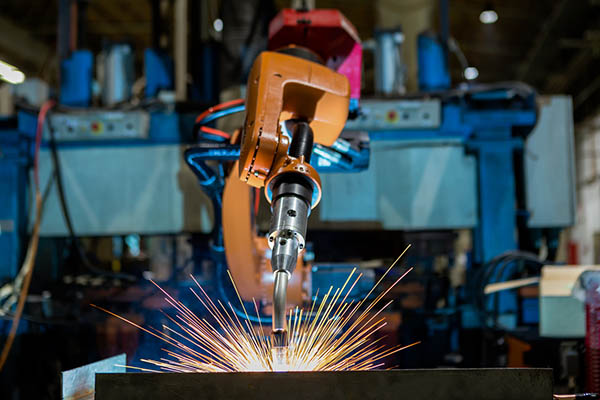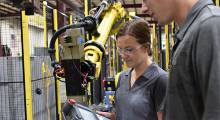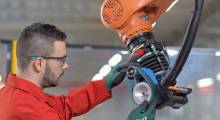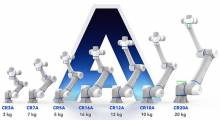As labor shortages continue globally, more manufacturers are turning to automation to reduce costs and maximize labor utilization. One task that robots are doing more of is welding. April is National Welding Month.
In the past, welding was often thought of as a job that would be difficult to automate. However, advancements in artificial intelligence, hardware engineering, and motion control are allowing robots to take on harder tasks.
Today, robotic welding reportedly accounts for accounts for 29% of all robotics applications. Innovations in industrial and collaborative robots have helped the technology grow in response to demand.
Welding workforce is aging
The welding industry faces an aging workforce and a persistently slow trickle of new talent. In fact, less than 20% of welders are under 35 years old. The average welder today is 55 years old. This is a much higher average than in many other industries.
Very soon, a wave of industry veterans, those who make up that average age, will be retiring, leaving behind a much smaller workforce to fill their roles. By 2024, the U.S. will have a shortage of over 400,000 welders.
Solving the welding labor shortage requires innovation and advancement. Robot welders are the perfect solution for several reasons. They can’t replace skilled welders, but they can help professionals work more safely and productively.
Integrating robotics into existing teams will help increase revenue and attract new hires to the industry. These machines are already at work, assisting teams worldwide to adapt and innovate in the face of today’s challenges.
Robotic welders show potential
Erik Larson, the vice president of operations at PMI LLC, experienced revolutionary benefits when his company bought a BotX robot welder.
“[PMI] would 'No Bid' contracts on a regular basis. With the BotX solution, we now quote that work and have been awarded contracts, so it has really helped grow our business.” he said in the report, “Hire (and Fire) a Welding Robot on Demand to Solve Your Skilled Labor Shortage.”
Larson is just one of many operators hiring robot welders to mitigate the labor shortage. In addition, welding robots offer real-world benefits that make up for any initial investment cost.
For one, they have been proven to improve safety and increase worker satisfaction. Robotic welders are also highly efficient without compromising on quality, and if properly programmed, they can produce large amounts of the same piece or product consistently.
Think about the benefits welding robots could have for small and midsize businesses. Even one welding robot could make a substantial difference.
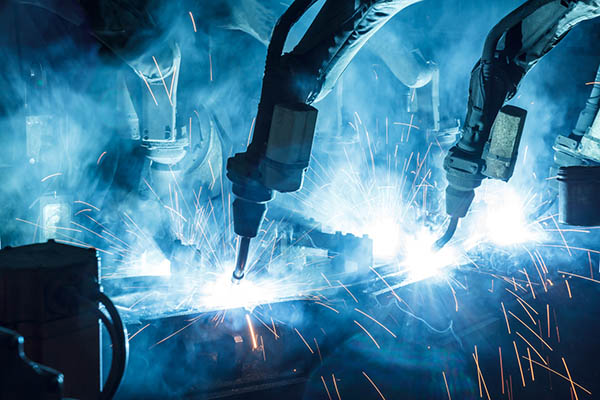
Integrating robotics in welding
Welders face numerous risks on the job, from UV damage and fumes to burns. Welding is a rewarding, high-paying industry, but many young people may be nervous about entering the field due to these dangers.
On the other hand, robotics has become a core part of classroom curriculums today. Integrating robot welders into existing teams should improve the employee experience and attract a new generation to the industry.
It is important to note that robots are in no way replacing welders.
“We’re not replacing anybody in our company with robots — we’re just moving people around to where they add most value,” said Larson in another case study on PMI’s robot welder implementation titled, “Welders on Demand: Collaborative Robots Solving Skills Gap & Increasing Business.”
The collaborative robot or cobot strategy is as successful in welding as it is in other fields, from manufacturing to medicine. Cobots can augment the existing skills of talented welders and allows them to work more efficiently and safely.
Today’s robot welders don’t lack technical skills, either. They can perform numerous types of work, from basic stitch welds to radial welds and virtually anything in between. Human workers can instruct cobots to perform certain repetitive tasks and supervise them, effectively multiplying their efforts.
Plus, robots can move with computerized precision, ensuring that every single measurement is perfectly accurate. Most robot models have a system for saving previous work, so users can pull from a growing library of programs to easily perform a weld without any robotics expertise needed.
About the author

Emily Newton is a tech writer who enjoys writing about the latest innovations changing our world. Read more of her articles online at Revolutionized Magazine.
Article topics
Email Sign Up

